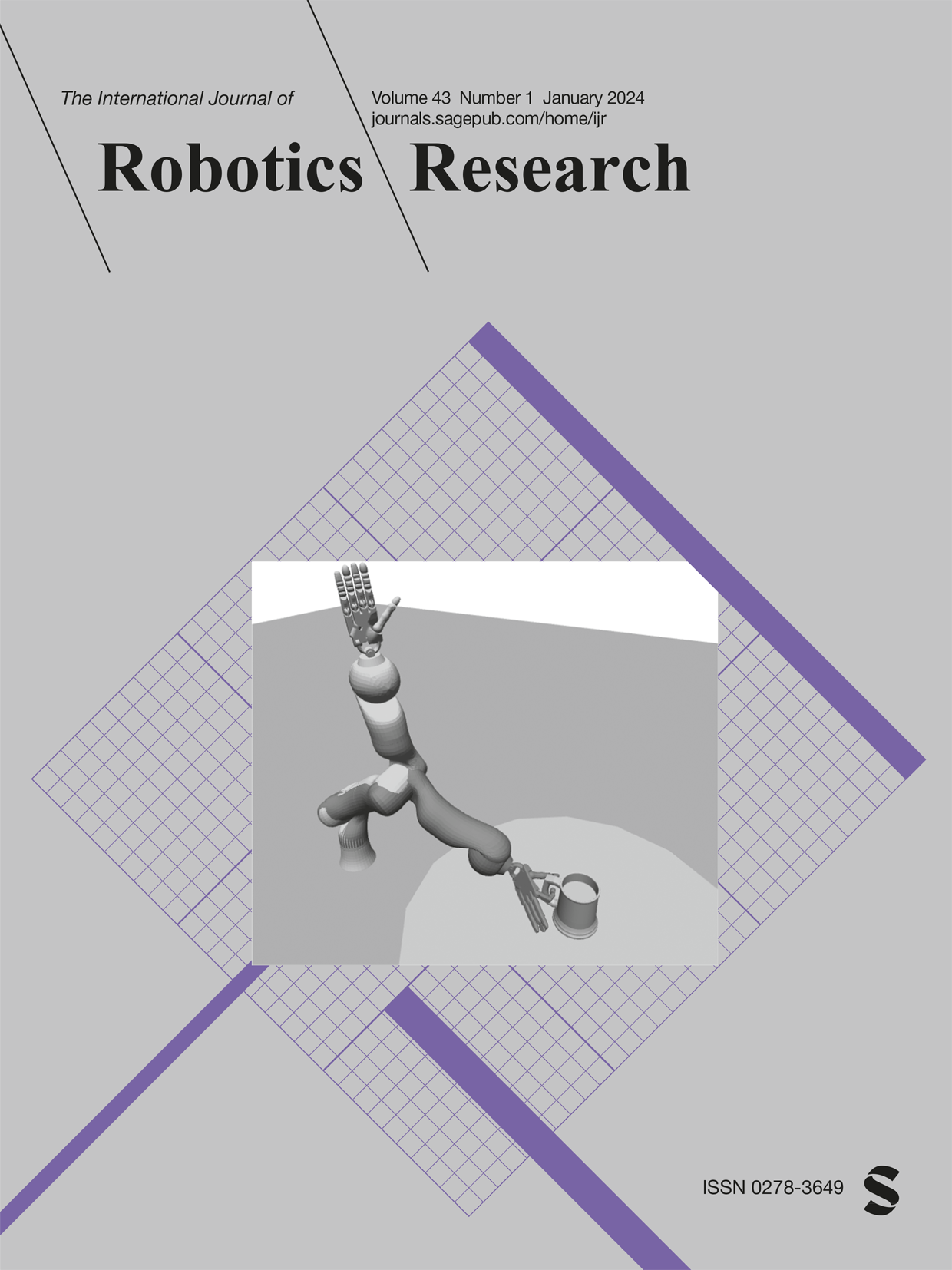Impact-aware task-space quadratic-programming control
IF 5
1区 计算机科学
Q1 ROBOTICS
引用次数: 19
Abstract
Robots usually establish contacts at rigid surfaces with near-zero relative velocities. Otherwise, impact-induced energy propagates in the robot’s linkage and may cause irreversible damage to the hardware. Moreover, abrupt changes in task-space contact velocity and peak impact forces also result in abrupt changes in robot joint velocities and torques; which can compromise controllers’ stability, especially for those based on smooth models. In reality, several tasks would require establishing contact with moderately high velocity. We propose to enhance task-space multi-objective controllers formulated as a quadratic program to be resilient to frictional impacts in three dimensions. We devise new constraints and reformulate the usual ones to be robust to the abrupt joint state changes mentioned earlier. The impact event becomes a controlled process once the optimal control search space is aware of: (1) the hardware-affordable impact bounds and (2) analytically computed feasible set (polyhedra) that constrain post-impact critical states. Prior to and nearby the targeted contact spot, we assume, at each control cycle, that the impact will occur at the next iteration. This somewhat one-step preview makes our controller robust to impact time and location. To assess our approach, we experimented its resilience to moderate impacts with the Panda manipulator and achieved swift grabbing tasks with the HRP-4 humanoid robot.影响感知任务空间二次规划控制
机器人通常在相对速度接近于零的刚性表面上建立接触。否则,冲击引起的能量会在机器人的连杆中传播,并可能对硬件造成不可逆的损坏。此外,任务空间接触速度和峰值冲击力的突变也会导致机器人关节速度和扭矩的突变;这可能会影响控制器的稳定性,特别是对于那些基于平滑模型的控制器。实际上,有几项任务需要以中等速度建立接触。我们建议增强任务空间多目标控制器,将其表述为二次规划,以适应三维摩擦冲击。我们设计了新的约束,并重新制定了通常的约束,以对前面提到的关节状态突变具有鲁棒性。一旦最优控制搜索空间意识到:(1)硬件负担得起的碰撞边界和(2)约束碰撞后临界状态的解析计算可行集(多面体),碰撞事件就成为一个受控过程。在目标接触点之前和附近,我们假设,在每个控制周期中,下一次迭代将发生冲击。这种一步预览使我们的控制器对时间和位置的影响具有鲁棒性。为了评估我们的方法,我们用Panda机械手实验了它对中等冲击的弹性,并用HRP-4类人机器人实现了快速抓取任务。
本文章由计算机程序翻译,如有差异,请以英文原文为准。
求助全文
约1分钟内获得全文
求助全文
来源期刊
CiteScore
22.20
自引率
0.00%
发文量
34
审稿时长
6-12 weeks
期刊介绍:
The International Journal of Robotics Research (IJRR) has been a leading peer-reviewed publication in the field for over two decades. It holds the distinction of being the first scholarly journal dedicated to robotics research.
IJRR presents cutting-edge and thought-provoking original research papers, articles, and reviews that delve into groundbreaking trends, technical advancements, and theoretical developments in robotics. Renowned scholars and practitioners contribute to its content, offering their expertise and insights. This journal covers a wide range of topics, going beyond narrow technical advancements to encompass various aspects of robotics.
The primary aim of IJRR is to publish work that has lasting value for the scientific and technological advancement of the field. Only original, robust, and practical research that can serve as a foundation for further progress is considered for publication. The focus is on producing content that will remain valuable and relevant over time.
In summary, IJRR stands as a prestigious publication that drives innovation and knowledge in robotics research.

 求助内容:
求助内容: 应助结果提醒方式:
应助结果提醒方式:


